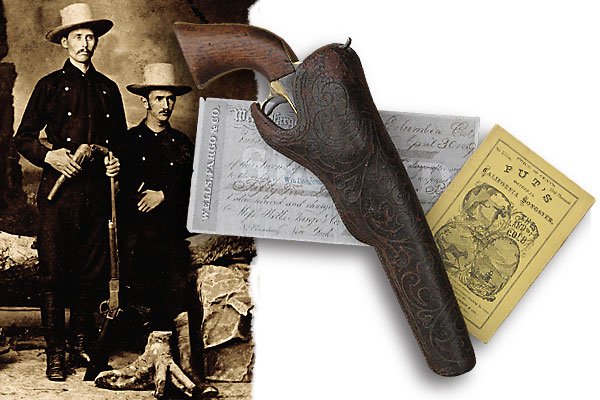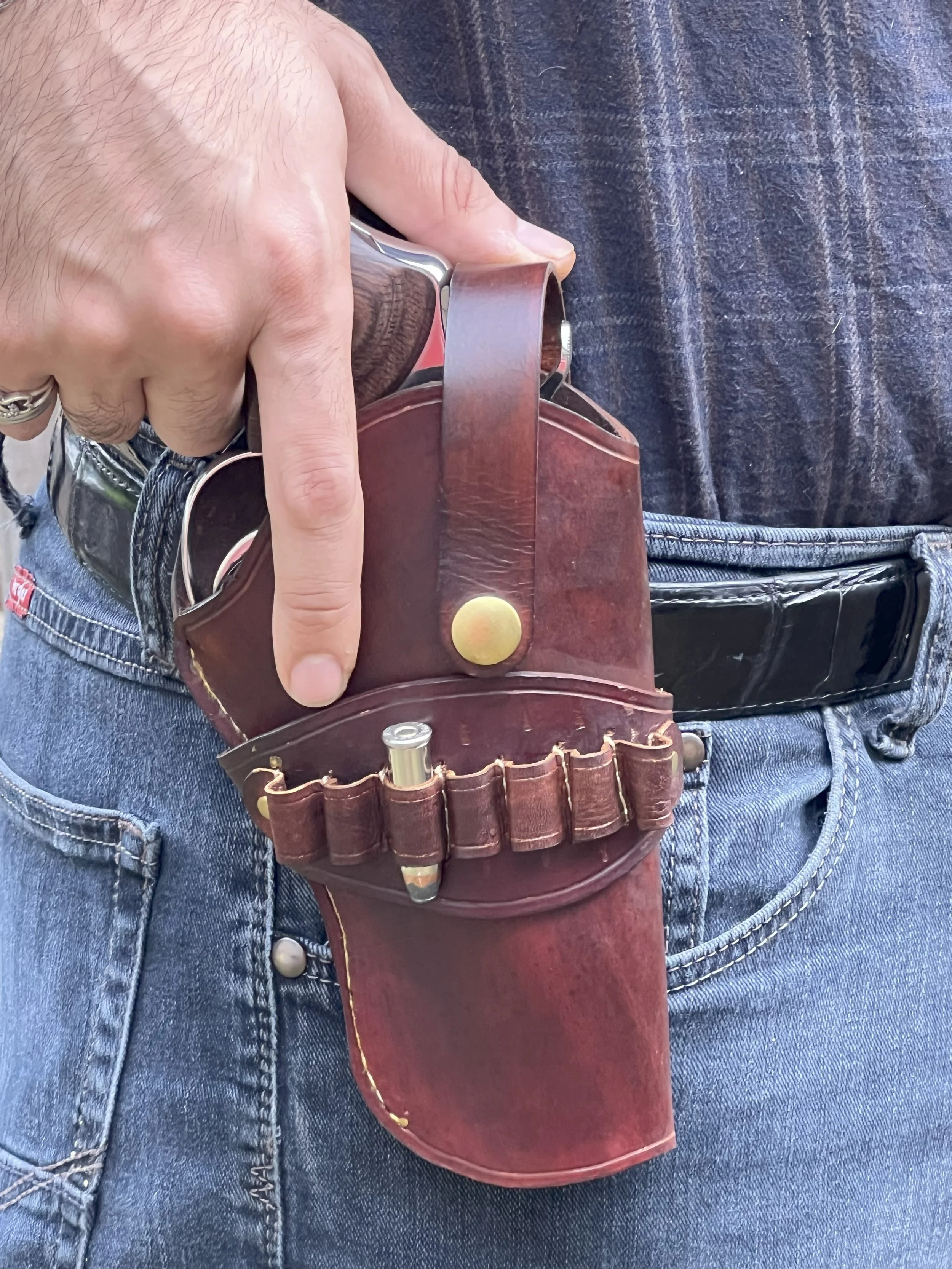Brief History on Old West holsters.
“The gun is no good to you if you can’t get to it in time. It must be where your hand expects it to be.” – Wyatt Earp
When you think of the Old West Cowboy, a few things come to mind right away. Spurs on boots, a broad brimmed hat, leather boots with beautiful floral patterns. But you can’t picture a cowboy without the six shooter and the leather holster that carried it. That rig wasn’t just a fashion statement. It was survival, identity, and sometimes reputation all wrapped in leather. I want to take you on a short ride to see how holsters took shape on the frontier.
Pommel Holsters: Saddle Born Beginnings
In the early 1800s, pistols were big, heavy, and not exactly easy to tote around. Cowboys and soldiers alike relied on the pommel holster, which draped over the saddle horn in pairs. They often had big leather flaps to shield the gun from rain and trail dust, because if black powder got wet, your weapon was as good as useless. With a pommel holster, a rider could keep his firepower close at hand without carrying all that weight on his hip.
The Slim Jim: Speed on the Hip
By the time of the California Gold Rush, revolvers had gotten smaller and quicker to handle. Saddle makers came up with what became known as the Slim Jim, a sleek hip holster that fit tight to the gun and left the top open for a faster draw. This style dropped the protective flap in favor of speed, and soon cowboys were dressing them up with border stamping, floral carving, and even metal caps at the bottom. The holster was no longer just about utility it was about showing a little pride in your gear.
The Mexican Loop: Built for Cartridge Belts
When revolvers moved away from cap and ball to cartridge ammunition, belts had to change too. Cowboys wanted to carry plenty of cartridges at the ready, which meant wide belts with loops. The old Slim Jim didn’t sit well on them, so saddlers in Mexico came up with a new design. The Mexican Loop used wide leather slots that wrapped over the holster, letting it ride comfortably on those cartridge belts. They caught on fast, and most were decorated with stamping, floral work, or sometimes beads and coins. It was a holster that blended function and flair, and it’s still a favorite today among reenactors and Cowboy Action shooters.
Mexican loop holster I made for a Colt Python.
The Buscadero: Hollywood’s Cowboy
When most folks picture a cowboy, they’re probably seeing a Buscadero rig without even knowing it. This low-slung style, where the holster drops below the belt so the grip sits right at hand level, has been a Hollywood staple since the 1920s. In truth, very few men on the frontier wore rigs like this. It wasn’t the most practical thing for riding or ranch work, but on the silver screen it looked slick. Texas lawmen may have dabbled in similar setups, but it was really Hollywood that turned the Buscadero into an icon.
Clint Eastwood in the legendary movie “Fistful of dollars” wearing the low hanging Buscadero holster.
Every holster tells a story. From the saddle rigs of the early frontier to the flashy buscaderos of Hollywood, each one was shaped by the needs and personalities of the folks who wore them. That tradition of combining utility with individuality is alive and well today. A good holster isn’t just a way to carry your iron, it’s a piece of craftsmanship that reflects who you are. If you’ve got a vision for a rig of your own, whether plain and practical or dressed up with carving and detail, I’d be glad to help bring it to life built by hand, the way it’s been done since the Old West.



